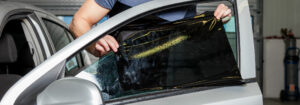Window tinting is pretty popular these days around Hamilton, from the mums in Morrinsville carting the kids to footy, to the bloke who just picked up a new Skoda Kodiaq over in Te Awamutu. Not just about looking flash—tints are handy for cutting the glare, keeping the cabin a bit cooler, and giving you a bit of privacy sitting in traffic on Kahikatea Drive or the stop-start shuffle down Clyde Street. But before you go blacking out your car like a VIP from Auckland, you wanna make sure those tints are actually legal, or you’ll run into dramas at your next WOF in Hamilton.
How Window Tint Actually Works
So, here’s the short version: window tint is all about something called VLT (Visible Light Transmittance). This is the percentage of light that gets through your windows. Clear glass, like you’ll see on an old Nissan Bluebird or Mazda Demio, usually lets 85% of the light in. Chuck a tint on that, and the number drops. For front windscreens on most cars, you can’t go lower than 70% VLT. Sides and back? That depends on your car’s class. If you’re cruising around in a Toyota Hiace van from Cambridge, the rear window rules differ heaps compared to a standard Honda CR-V from Rototuna.
Just keep in mind, if you’re adding tint film to your windows, it’s not just the film’s number you go by—you have to check the total VLT once it’s stuck on. If you put a 35% film on a window that already blocks some light, that overall VLT can dip way lower, which is where people sometimes trip up at WOF time.
Checking Your Tint is Legal
Don’t just take someone’s word for it at a cheap shop in Frankton. Window tint gets properly checked using a VLT meter—we use them at the shop in Hamilton all the time, especially when someone rolls up in a Hyundai Sonata, worried the tint is a bit too dark. If you’re getting your windows done, make sure you get a reputable installer and ask for written confirmation of what the VLT reading is. Saves a lot of hassle, especially during the foggy winter mornings heading over to Matangi when visibility already isn’t great.
Your car’s class matters. Commercial vans, buses, and even some utes have way laxer rules than normal sedans and SUVs. For most regular cars, even the back window can’t go darker than 35% VLT. So if you’re not sure what counts for your ride, check with NZTA or look at their full guide here: Minimum VLT limits for modified glazing (tinted overlays) for different vehicle classes.

The Difference: Factory vs Aftermarket Tint
Factory Tint
A lot of late-model cars—think Suzuki Swifts, Subaru Levorg wagons, even some VW Passats—come out of the factory with the glass already slightly darkened. This isn’t film; it’s actual dye in the glass. Factory tints usually tell you the VLT right there on the window, and you’ll nearly always pass your WOF with them, no worries.
Aftermarket Tint
Aftermarket tint is the stuff an installer sticks on after the car leaves the factory. Bit different—made of polyester, layered up with dyes, sometimes metal, and a scratch-resistant top. Seen plenty of these on imports from Japan, especially Mercedes MLs and even the odd Lexus RX popping in from Raglan for a service. Aftermarket tint can look sharp, but you really need to check that final VLT number, or it’s a quick fail on your next WOF Hamilton or car service in Hamilton.

WOF Fails from Tinted Windows
So here’s what happens: you roll into Grimmer Motors for your WOF, maybe you’ve got one of those zippy Kia Rios from Gordonton or a big old SsangYong Rexton from Huntly. The tester measures the tints and if the light can’t get through (below the legal VLT), instant fail. You’ll need to peel off those tints and get checked again before you’re legal on NZ roads. Best to see a proper specialist for removing the film, it’s a bit of a pain to do neatly yourself.
Need Help? Let Us Sort Your Car
While we aren’t slapping tints on ourselves, we can tee up window tinting for you with proper pros—and always at a sharp price. And for anything else—hybrid repair, car service Hamilton, or just finding what’s making a weird noise in your Peugeot or BMW—give us a bell at Grimmer Motors. We’ll get you sorted with honest advice and repairs that actually last in real-world Waikato driving.

